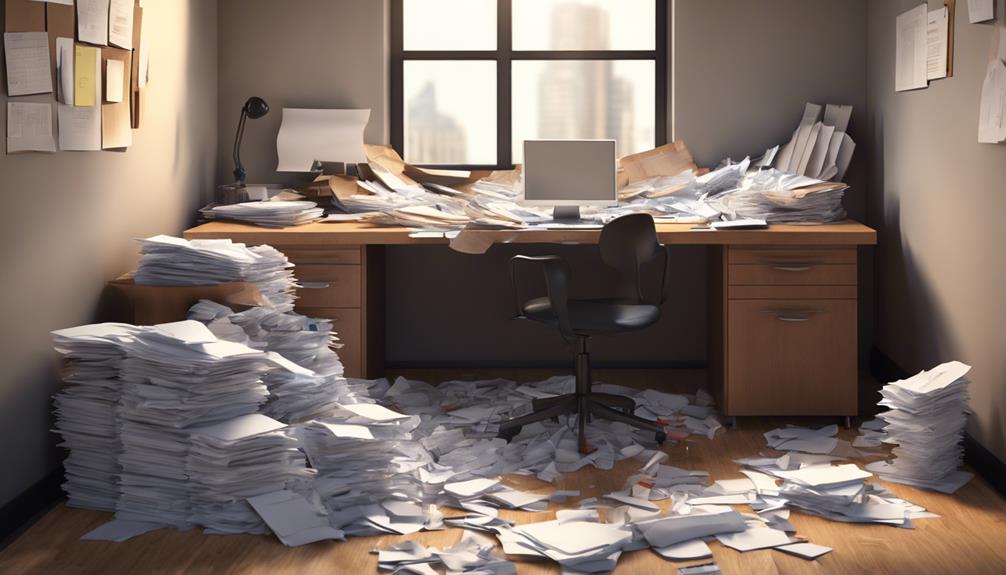
No, archiving a message isn't the same as deleting it. When you archive a message, you're simply moving it out of your immediate view but it's still stored and you can access it whenever you need to. On the other hand, deleting a message removes it permanently from your inbox and, after a certain period, it can't be recovered. Archiving keeps your inbox tidy without sacrificing the safety of your messages, while deleting frees up the space entirely, but at the risk of losing data forever. This understanding could greatly influence how you manage your digital space to ensure nothing important slips away.
Understanding Archiving and Deleting
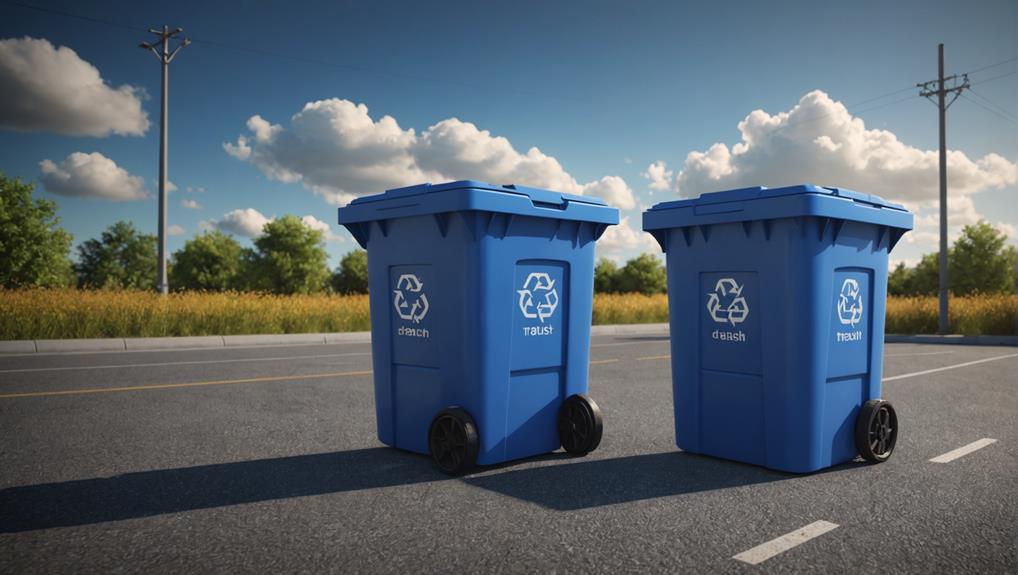
Archiving preserves your files for future access, while deleting removes them permanently from your system. You're likely familiar with that moment of hesitation before deciding whether to archive or delete a file. It's not just about freeing up space—it's about maintaining a connection to your past and ensuring you're part of a continuous narrative.
When you archive, you're stowing away pieces of your digital life that you might need later. It's like keeping old letters in a chest, knowing they hold memories and information that could be valuable down the road. This act of preserving is more than just about saving space; it's about keeping your options open and staying linked to your digital history.
On the other hand, deleting can feel final, like closing a chapter. It's necessary at times, especially when you're sure that the files no longer serve a purpose and you're ready to move on. But remember, once you delete, those files are out of reach forever.
Thus, think of archiving as adding to your community library, where every file has the potential to contribute in the future. Deleting is more like recycling a paper—transforming it so it's gone forever. Choose wisely, knowing that each choice impacts your digital legacy.
What Does Archiving Mean?
You preserve your digital treasures when you choose to archive. It's like tucking away your favorite memories into a safe yet accessible place, ensuring they remain part of your story without cluttering your day-to-day life. When you archive emails, photos, or documents, you're not just clearing space; you're curating your digital environment. It's a way to keep what matters most at your fingertips, without the overwhelm of unnecessary details.
Imagine you're part of a community where everyone values space and organization. Archiving lets you maintain that sense of order and belonging, knowing that nothing important is lost, just stored neatly away. You can revisit these items whenever you need, just like pulling a cherished book off a shelf in a well-organized library.
This action isn't about saying goodbye; it's about saying, "I'll see you later." You're making a choice to prioritize your digital landscape while keeping a link to the past. So, when you think about archiving, think of it as a gentle pause on items you care about, safely keeping them until you're ready to welcome them back into your active life.
What Happens When You Delete?
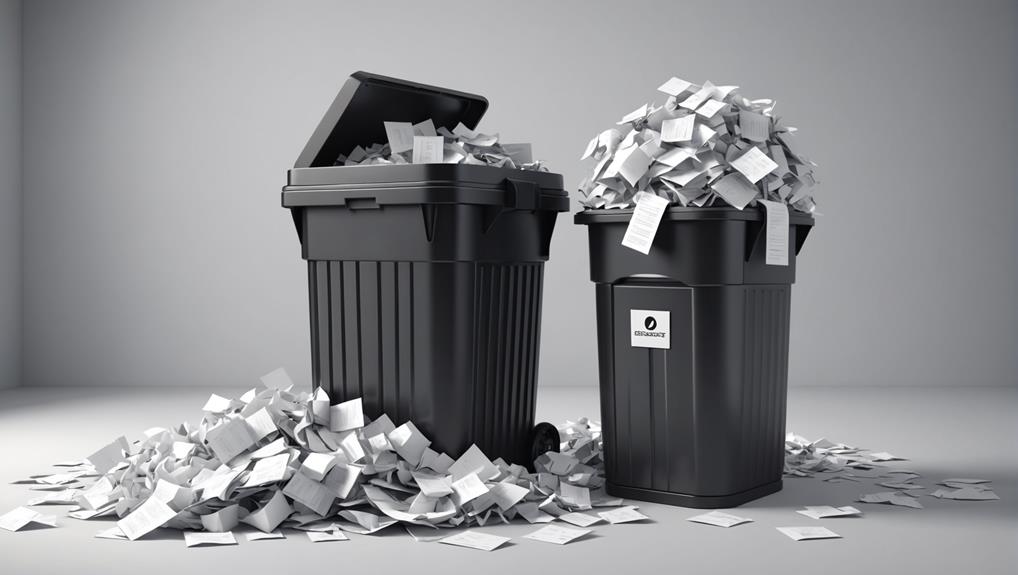
When you delete a file, it's permanently removed from your digital space, leaving no option for retrieval. You might feel a sense of finality, as if you're cleaning out old items that no longer serve a purpose in your life. It's like tidying up your physical room, but in your digital world. You decide what stays and what goes, shaping your digital environment to reflect your current needs and preferences.
Imagine you're part of a community where everyone values neatness and organization. By deleting unnecessary files, you're not only freeing up space on your device, but you're also aligning with a shared value of efficiency and clarity. It's a collective effort to maintain an uncluttered, functional space where everyone can navigate easily and effectively.
However, remember that once you choose to delete something, it's like saying goodbye forever. There's no undo button that will bring back that photo, document, or email once it's gone. It's a powerful tool, so use it wisely. Think of it as curating your digital legacy—keeping what's valuable and letting go of what's not. This way, you're not just cleaning up; you're making room for new memories and experiences.
Key Differences Explained
Understanding the key differences between archiving and deleting can help you manage your digital files more effectively. When you archive a message or file, it's like you're tucking it away into a safe corner where it's out of sight but still within reach. This way, you're keeping your space clear without losing access to your stuff. It's about staying organized and ensuring you can always find what you need later on.
Deleting, on the other hand, is like saying goodbye for good. Once you delete a file, it's intended to disappear permanently, making room for new stuff. This is much like decluttering your home, where you remove items you're certain you won't need again.
Imagine you're part of a community of collectors. Archiving is akin to placing your valuables in a storage unit — safe, secure, and retrievable. Deleting is more like throwing things away, which you do when you're sure they no longer have value to you or your community. Both actions have their place in managing your digital life, just as they do in a physical community, helping everyone stay more organized and focused.
Archiving Vs Deleting: Pros and Cons
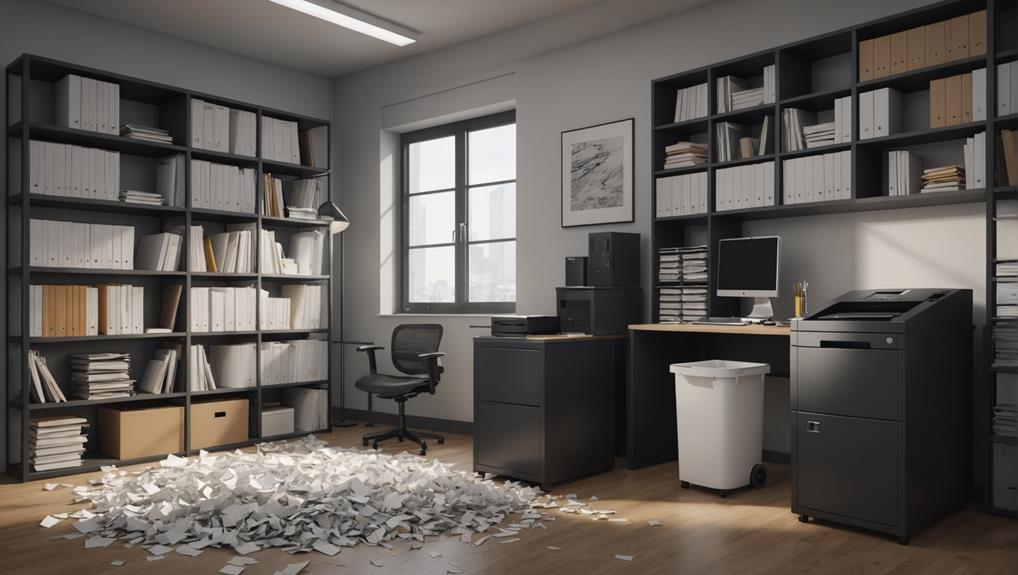
Let's now explore the advantages and disadvantages of archiving versus deleting your digital files. When you archive, you're essentially putting your files in a safe spot where they're out of your immediate view but still accessible when needed. This is great because you're keeping your digital space tidy without losing anything permanently. It gives you peace of mind, knowing that you can retrieve these files whenever you want, reconnecting with old memories or resources as if no time has passed.
On the other hand, deleting files frees up space more drastically, which can be a breath of fresh air if you're feeling overwhelmed by digital clutter. It's a way to let go of what you no longer need, making room for new experiences and data. However, once something is deleted, it's usually gone for good. This means you might later regret losing access to certain files or information that once seemed unnecessary but has since gained new relevance.
Both options have their place in managing your digital life. It's about finding the right balance that makes you feel both secure in your data management and free from unnecessary clutter. Remember, it's your digital space—manage it in a way that feels right for you.
How Archiving Affects Your Storage
Archiving your files efficiently manages your storage without permanently deleting data. When you're part of a team, whether at work or in personal projects, keeping everyone on the same page is crucial. Archiving lets you clear up space while ensuring that nothing important gets lost in the shuffle. It's like tidying up your digital workspace without throwing away the memories or information that might be needed later.
Think of your storage space as a bookshelf. Just as you wouldn't toss out old photo albums to make room for new ones, archiving allows you to move files you don't currently need into a metaphorical storage box. These archived files aren't gone—they're just out of the way. You can retrieve them anytime, making sure you're not isolating yourself from past resources or breaking the flow of shared information.
This approach not only keeps your immediate environment clutter-free but also fosters a sense of continuity and security within your group. Everyone knows that nothing is lost for good; it's just stored away safely. This method ensures that you can always go back, reflect, and reconnect with what you've archived, maintaining a bridge to your past work and experiences.
The Life Cycle of Deleted Messages
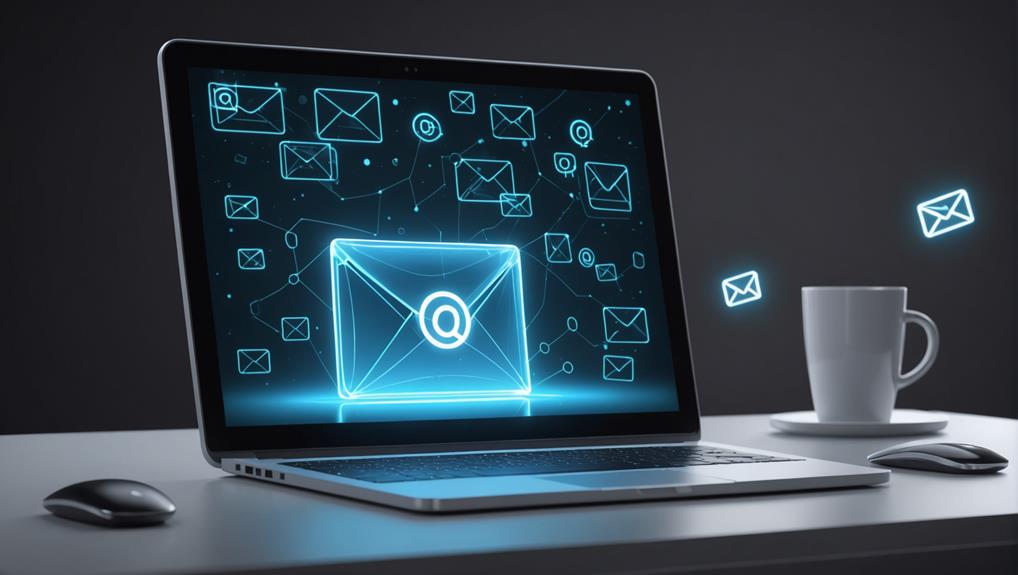
Once you delete a message, it embarks on a complex journey through your device's system. It's like it's leaving a tight-knit community, heading out on a solo voyage. Initially, you might think it's gone forever, simply wiped from existence. But that's not quite the case. It first moves to a hidden realm often called the “trash” or “recycle bin.” Here, it stays, lingering and waiting—just in case you realize you need it back.
During this stage, the message isn't really deleted. It's out of sight, yes, but still part of the group, nestled away in a corner of your device's memory. If you decide it's time for a true goodbye, the next step is to empty the trash. This act signals your device to mark the space the message occupies as reusable. Yet, even then, the data isn't immediately destroyed. It remains on your device until new data overwrites it.
This process shows that deleting a message is more about giving it a new purpose rather than erasing it completely. It's a transformative phase, reshaping how the data exists in your digital world, always ensuring it has a place, even if it's in the shadows.
Best Practices for Managing Emails
Understanding how emails are managed, deleted, or archived can help you keep your inbox efficient and organized. You're not alone in feeling overwhelmed by an overflowing email account; it's a common challenge that, fortunately, has manageable solutions. By adopting a few key habits, you'll feel more in control and less stressed.
Firstly, make it a habit to review your emails daily. This doesn't mean you need to respond to every email immediately, but a quick scan can help you prioritize and decide what requires your attention now and what can be archived for later. Think of your inbox as a friend you're checking in with, not a burden.
Create folders or labels based on your needs—work, personal, urgent, read later—to categorize your emails. This system not only keeps your inbox tidy but also makes it easier for you to retrieve important emails when they're needed. Remember, everyone has their unique flow; find what feels right for you.
Lastly, be ruthless with unsubscribing from newsletters or promotions that no longer serve you. Reducing incoming clutter will save you time and decision-making energy. You're building a community within your inbox, one where every message truly matters to you.
Future Trends in Email Management
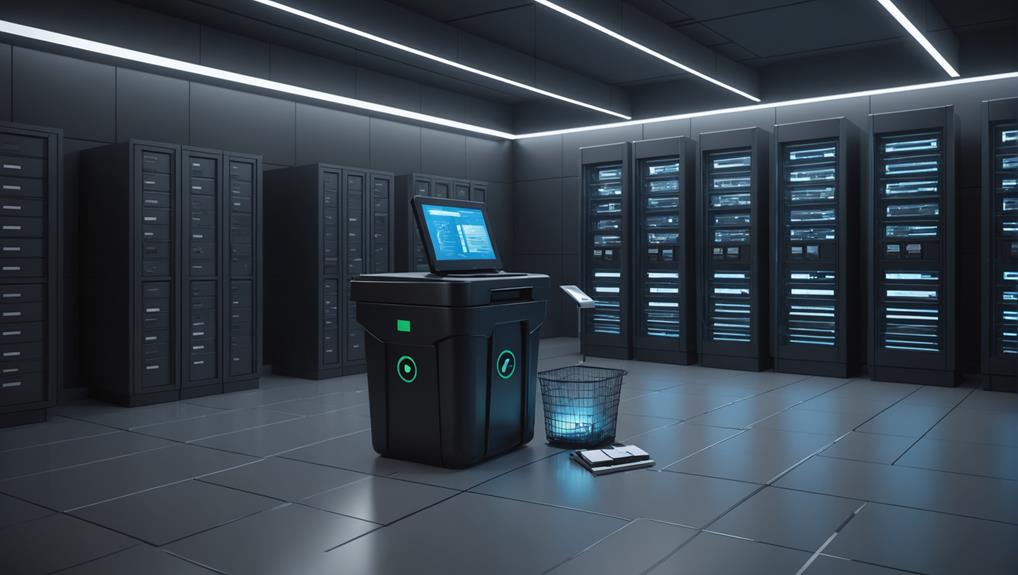
As we look to the future, email management technologies are set to become even more intuitive and user-focused. Imagine feeling like your email system truly understands your needs, helping you to stay connected and in control effortlessly. This isn't just a dream—it's where we're headed.
You'll notice upcoming tools being tailored to adapt to your unique workflow. Picture AI that predicts and organizes your incoming emails based on priority and your personal schedule. You won't have to waste time sorting through a cluttered inbox; the important messages will stand out because your system knows what's crucial to you.
Moreover, collaboration within email platforms will enhance significantly. You'll be able to share, edit, and manage documents directly within your email environment, seamlessly integrating with team members. It's about removing barriers, making sure you feel part of a community, whether you're working remotely or in an office.
Privacy enhancements will also be a big part of future trends. Expect robust encryption and more sophisticated anti-hacking measures, all designed to keep your communications safe without you having to worry about it. You're not just using an email service; you're part of a secure community that values and protects your privacy.
Conclusion
So, now you've seen that archiving and deleting emails aren't the same. Archiving keeps your messages tidy and accessible, while deleting frees up space by permanently removing them. Weigh the pros and cons to decide what's best for your needs. Remember, archived items can be retrieved, but once a message is deleted, it's gone for good. Keep evolving your email management strategy to stay efficient and organized as technology advances. Stay on top of your emails, and you'll master your inbox!






